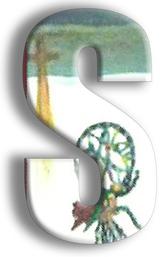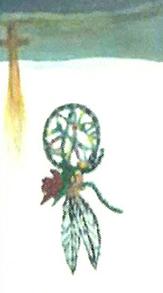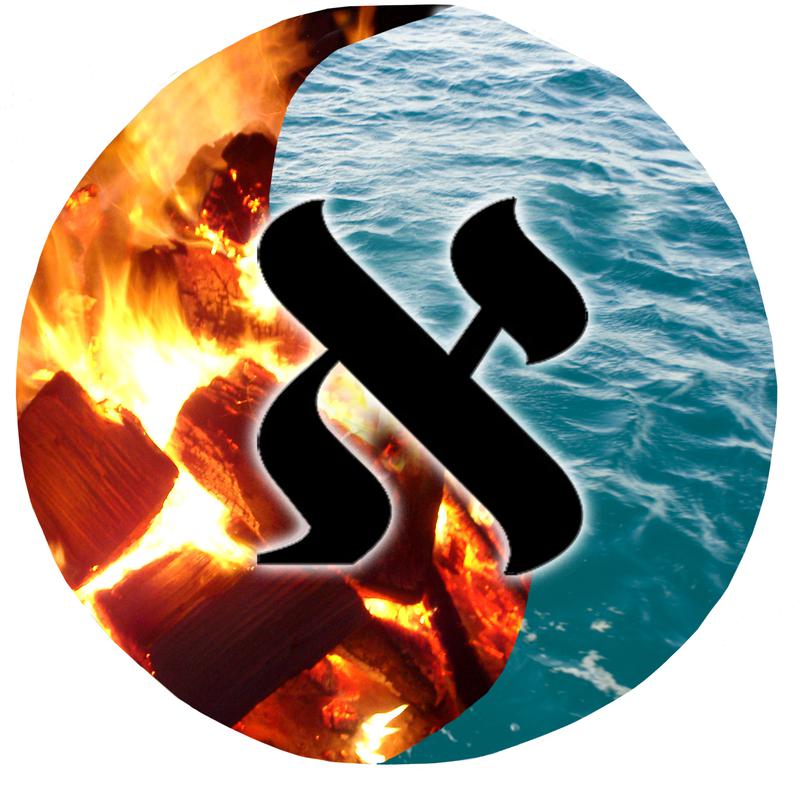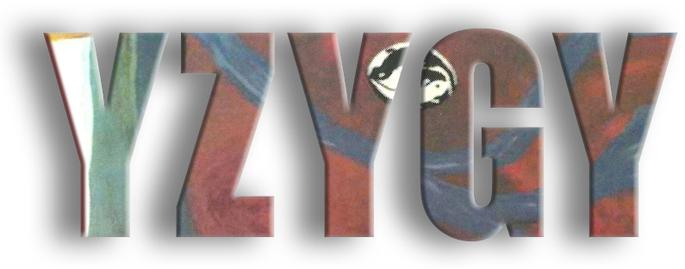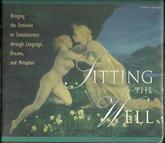MEMOIR LOGO CONCEPT: The aleph and a Sufi mystic inspired my creation and design of the syzygy logo, which I initially based on the symbolism of the yin and yang.
But the concept expanded when I first saw the aleph in Judith Cornell’s
Mandala Healing Kit, My inexplicable attraction to it led me to incorporate it into my logo before I knew what it meant.
I later read that the “Aleph (the first letter of the sacred Hebrew alphabet) embodies the primordial, divine potential of the universe. ... Aleph contains all the universe’s potential and all of its emptiness simultaneously. Aleph represents a dynamic process of movement from unity to diversity and back to unity,” Jennifer Judelsohn, Songs of Creation.
And the mystic poet Rumi inspired me to use the fire and water concept after I read The Question. Here is an excerpt:
“The presence is there in front of me. A fire on the left, a lovely stream on the right.
One group walks toward the fire, into the fire. Another toward the sweet flowing water.
No one knows which are blessed and which are not.
Whoever walks into the fire appears suddenly in the stream.
A head goes under water, and that head pokes out of the fire.”
LOGO ART: Cropped fire and water images from Free Images.
LOTUS LOGO: In spiritual and religious literature, “the lotus is a symbol for the macrocosm and the microcosm, the universe and man. The lotus represents the divinity of the cosmos as well as the divinity of man.
The lotus is the center of the infinite, omnipresent consciousness which connects with the consciousness of the universe. Through the intuition, one of man’s divine gifts, the spiritual student can see the infinite, omnipresent consciousness as the lotus flower within himself.”
LOTUS ART: Courtesy
Homestead, my website service provider. (Temporary art while I design of my own lotus logo.)
TO DOWNLOAD FREE SAMPLE CHAPTER OF SYZYGY:
THE MEMOIR
TO BUY MEMOIR
(Thru Amazon)
THE MEMOIR
CROSSING THE BRIDGE TO SELF
THE WEBSITE
THE MEMOIR
NEW!
Source Notes, Parts I and II
The links underlined in the following entries (other than the internal header links) were selected based on added information (and in some cases reviews) that the sites provide about the author and/or the work. Most author's names are linked to Bio. True Story. And most poets and poems are linked to The Academy of American Poets. When available, a link to the author's website is provided. Otherwise, most works are available through traditional and online bookstores. For additional publishing information, please see corresponding entry in Sources & Resources.
1. de Laszlo, Violet S. Ed., Psyche and Symbol: A Collection of Selected Works from the Writings of C. G. Jung, p. 30, Garden City: Doubleday, 1958.
de Laszlo, Violet S. Ed., Psyche and Symbol: A Collection of Selected Works from the Writings of C. G. Jung, p. 30, Garden City: Doubleday, 1958.
2. James A. Hall, Jungian Dream Interpretation: A Handbook of Theory and Practice, pp. 9–10. Toronto: Inner City Books, 1983.
James A. Hall, Jungian Dream Interpretation: A Handbook of Theory and Practice, pp. 9–10. Toronto: Inner City Books, 1983.
3. Ibid., p. 120.
Ibid., p. 120.
4. Ibid., p. 120.
Ibid., p. 120.
2. Matthew McKay, Ph.D., and Patrick Fanning. Kirk Johnson, ed. Self-Esteem, chap. 9, “Responding to Criticism,” subtitled, “The Myth of Reality: A TV Screen in Every Head,” p. 187. Saint Martin’s Paperbacks, New Harbinger Publications, 1987.
Matthew McKay, Ph.D., and Patrick Fanning. Kirk Johnson, ed. Self-Esteem, chap. 9, “Responding to Criticism,” subtitled, “The Myth of Reality: A TV Screen in Every Head,” p. 187. Saint Martin’s Paperbacks, New Harbinger Publications, 1987.
1. Gary Goldschneider. Personology: The Precision Approach to Charting Your Life, Career, and Relationships. Philadelphia/London: Running Press, 2005.
Gary Goldschneider. Personology: The Precision Approach to Charting Your Life, Career, and Relationships. Philadelphia/London: Running Press, 2005.
Part I: Introduction
1. Marion Woodman. Sitting by the Well: Bringing the Feminine to Consciousness through Language, Dreams, and Metaphor, “Session Nine: Losing Your Life in Order to Find It, Part One.” Audio Series. Boulder, CO: Sounds True, 1998.
Marion Woodman. Sitting by the Well: Bringing the Feminine to Consciousness through Language, Dreams, and Metaphor, “Session Nine: Losing Your Life in Order to Find It, Part One.” Audio Series. Boulder, CO: Sounds True, 1998.
Chapter 1
1. Judith Rossner, Looking for Mr. Goodbar. Washington Square Press Publications of Pocket Books. NY: Simon & Schuster Inc., 1975.
Judith Rossner, Looking for Mr. Goodbar. Washington Square Press Publications of Pocket Books. NY: Simon & Schuster Inc., 1975.
2. Robert Moss. Conscious Dreaming: A Spiritual Path for Everyday Life, p. 78. NY: Three Rivers Press, 1996.
Robert Moss. Conscious Dreaming: A Spiritual Path for Everyday Life, p. 78. NY: Three Rivers Press, 1996.
Chapter 3
3. Norman Vincent Peale. The Power of Positive Thinking. NY: Prentice-Hall Inc., 1952. (A free updated eBook available at the above link.)
Norman Vincent Peale. The Power of Positive Thinking. NY: Prentice-Hall Inc., 1952. (A free updated eBook available at the above link.)
4.  Wally Lamb. This Much Is True I Know. NY: HarperCollins Publishers Inc., 1998.
Wally Lamb. This Much Is True I Know. NY: HarperCollins Publishers Inc., 1998.
Chapter 4
1. Clarissa Pinkola Estés. Women Who Run with the Wolves: Myths and Stories of the Wild Woman Archetype. New York, NY: Ballantine Books, 1992, pp. 190–1, in a discussion on Hans Christian Andersen’s The Ugly Duckling, 1845.
Clarissa Pinkola Estés. Women Who Run with the Wolves: Myths and Stories of the Wild Woman Archetype. New York, NY: Ballantine Books, 1992, pp. 190–1, in a discussion on Hans Christian Andersen’s The Ugly Duckling, 1845.
2. Adrienne Rich. Diving into the Wreck: Poems 1971–1972. W. W. Norton & Company Inc., 1973. Excerpt from “Diving into the Wreck.”
Adrienne Rich. Diving into the Wreck: Poems 1971–1972. W. W. Norton & Company Inc., 1973. Excerpt from “Diving into the Wreck.”
Part II: Introduction
Chapter 5
1. Edna St. Vincent Millay (1892–1950), “Childhood Is the Kingdom Where Nobody Dies.” Eugene, OR: The Edna St. Vincent Millay Society, 1937.
Edna St. Vincent Millay (1892–1950), “Childhood Is the Kingdom Where Nobody Dies.” Eugene, OR: The Edna St. Vincent Millay Society, 1937.
Chapter 6
Chapter 7
1. Hans Christian Andersen (1805–1875), Tales, ed. Charles W. Eliot. Vol. xvii, part 3 of 51 [“The Storks”]. The Harvard Classics: NY: P. F. Collier & Son, 1909–14.
Hans Christian Andersen (1805–1875), Tales, ed. Charles W. Eliot. Vol. xvii, part 3 of 51 [“The Storks”]. The Harvard Classics: NY: P. F. Collier & Son, 1909–14.
2. “Apostle’s Creed,” a shortened version of “The Nicene Creed.” (I think the version I recall is a cross between these two.)
“Apostle’s Creed,” a shortened version of “The Nicene Creed.” (I think the version I recall is a cross between these two.)
Chapter 8
1. Martin Luther King, Jr., “I Have a Dream” speech. (Delivered on the steps of the Lincoln Memorial on August 28, 1963.)
Martin Luther King, Jr., “I Have a Dream” speech. (Delivered on the steps of the Lincoln Memorial on August 28, 1963.)
Chapter 9
Chapter 10
1. Emily Dickinson. “Eden is that old-fashioned House” (poem 1657). The Complete Poems of Emily Dickinson, Thomas H. Johnson, ed., Cambridge: the Belknap Press, Harvard University Press, 1955.
Emily Dickinson. “Eden is that old-fashioned House” (poem 1657). The Complete Poems of Emily Dickinson, Thomas H. Johnson, ed., Cambridge: the Belknap Press, Harvard University Press, 1955.
Chapter 11
2. Authorized King James Version Online, Matthew 17: 15–18. (The fine line between devils and lunatics.)
Authorized King James Version Online, Matthew 17: 15–18. (The fine line between devils and lunatics.)
Chapter 12
1. Clarissa Pinkola Estés. Women Who Run With the Wolves. (Different ‘thicknesses of skin, different capacities for perceiving pain.’)
Clarissa Pinkola Estés. Women Who Run With the Wolves. (Different ‘thicknesses of skin, different capacities for perceiving pain.’)
Emily Dickinson
Sylvia Plath
e. e. cummings
Edna St. Vincent Millay
Hans Christian Andersen
Adrienne Rich
Martin Luther King, Jr.
Charlotte Brontë
© 1955–2015 Syzygy: Crossing the Bridge to Self. All Rights Reserved.
For a complete listing of all
Source Notes, please click here.
